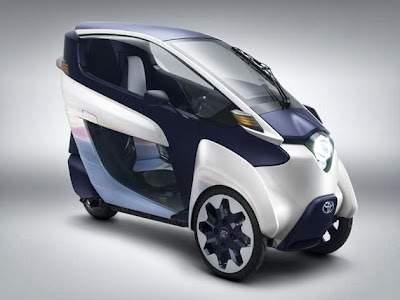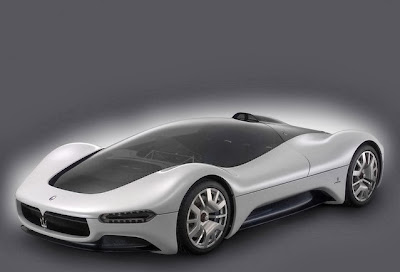Automakers increasingly are turning to electric vehicles to offer buyers zero-emissions mobility, but four-wheeled EVs can be heavy and expensive, and they can’t slice through urban centers any better than regular cars. Toyota thinks it has a solution, and it’s called the i-ROAD. The small, three-wheeled electric-powered concept is something of a cross between a car, a motorcycle, and a fancy golf cart, and Toyota refers to it as a personal mobility vehicle.
i-ROAD Is i-Clever
On paper, the i-ROAD might not seem as cool as conventionally powered three-wheelers such as Morgan’s 3-Wheeler, but it’s actually quite innovative. The i-ROAD seats two passengers in tandem to keep the body as narrow as possible; it measures just 33.5 inches wide, 56.9 inches high, and 92.5 inches long. That’s just a bit more than half the width of a Smart Fortwo Electric Drive, and Toyota claims that the i-ROAD is no wider than a two-wheeler. Toyota must be referring to some of the beefier bikes, but either way, the concept is skinny.
Besides offering hypothetical urban customers a tight, motorcycle-like footprint, the i-ROAD also gives them protection from the elements. Featuring a fully enclosed body—bettering BMW’s odd C1 scooter, which had only a roof panel—the i-ROAD makes a far better foul-weather proposition than a regular motorcycle or even the Morgan or Can-Am Spyder. Toyota says that because the i-ROAD’s passenger cell is fully enclosed, no helmet is necessary—a critical point for the hair-style sensitive. The closed body also means the driver cannot stick his or her foot out to steady the i-ROAD when at rest, so Toyota gave the concept a trick front-wheel setup that keeps it upright without human help.
Toyota calls the i-ROAD’s self-righting front-wheel gadgetry Active Lean technology, and it consists of a geared actuator affixed to each front wheel’s suspension arm. A computer manages the degree of lean of each front wheel—as the angle of lean of one wheel increases, the other lowers by the same amount—using steering angle, a gyroscope, and vehicle speed to induce lean in corners or keep the i-ROAD steady at low speeds. The system also can filter out potentially balance-upsetting road imperfections when traveling in a straight line. The i-ROAD is steered using a squircle-shaped steering wheel rather than a set of handlebars.
i-ROAD, Therefore i-Zero Emissions
If you thought the i-ROAD’s front-wheel setup couldn’t get any more involving or interesting—from a technical standpoint, at least—prepare to be further wowed. The i-ROAD is actually front-wheel drive, and no power goes to the rear wheel. Each front wheel features a 2.7-hp in- hub electric motor powered by a shared lithium-ion battery that offers a claimed driving range of 30 miles. Toyota says battery top-offs take just three hours when fed by a “conventional domestic power supply,” but doesn’t indicate which domestic power standard—Japanese, European, or U.S.—is being cited.
There aren’t many exciting electric cars out there right now—excepting Tesla’s quick and attractive Model S—but we’re genuinely tickled by this Toyota concept. It looks cool, and we’re inclined to believe Toyota’s press-release hyperbole regarding the i-ROAD’s “unique driving experience.” We foresee the i-ROAD having far more success in Europe and Japan than here, though, if it ever were to go into production, thanks to the variously tight parking conditions, congested urban centers, and strict emissions regulations. Too bad. Because while the i-ROAD has one less wheel than a Prius, it’s at least three times more interesting.
Article source : Revealed: Toyota i-Road concept























